5 Signs You’ve Actually Been Wearing the Wrong Shoe Size, According to Doctors
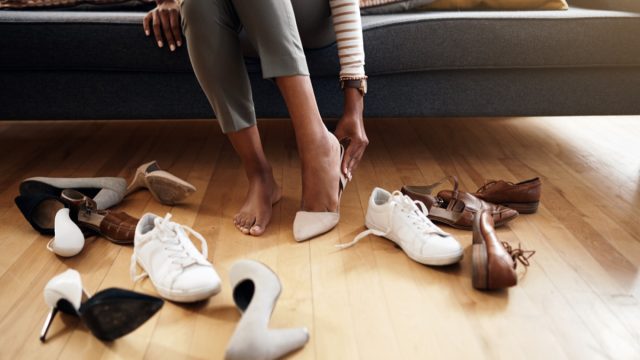
Most of us have been wearing the same shoe size since we were teenagers, but that doesn’t necessarily mean we’ve been wearing the right fit the whole time. Your feet can gradually change in both length and width as you get older, Mauricio Garcia, MD, an orthopedic surgeon and the project support coordinator for Hyper Arch Motion’s orthopedic sneakers, tells Best Life. As a result, you should be getting your shoe size measured every so often to make sure you haven’t outgrown your go-to footwear. If you aren’t doing this, you may be at risk of encountering complications. Read on to discover five signs you’ve been wearing the wrong shoe size.
READ THIS NEXT: Never Wear These 3 Kinds of Shoes If You Have Back Pain, Experts Warn.
1
You’re experiencing persistent foot pain.
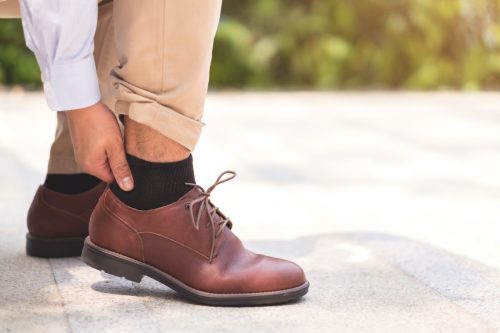
It’s not uncommon for your feet to feel worse for wear after a long day of walking. But they shouldn’t always be hurting you. One of the major signs that you’ve been wearing the wrong shoe size is “persistent foot pain or discomfort, even after a short period of wear,” according to Garcia.
“It’s essential to wear the right size to ensure proper support, alignment, and comfort for your feet,” he says. “Your shoes should fit comfortably without pinching or slipping. There should be about a thumb’s width of space between your longest toe and the end of the shoe, and your heel should be securely in place without excessive movement.”
2
Or your feet feel off in other ways.
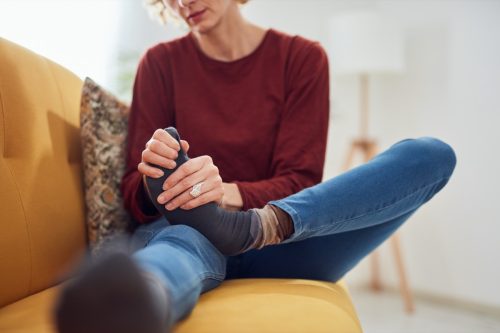
You don’t necessarily have to be in pain all the time for there to be an issue with your sizing. Gregory Alvarez, DPM, a professional podiatrist at the Ankle & Foot Centers of America, says you may also notice that your feet just feel tired after a day of wearing shoes.
“If you’re suffering from foot fatigue, it could be due to ill-fitting shoes,” he says.
Other unwanted feelings may also be signs that your footwear is not fitting correctly, according to Alvarez. “Shoes that are too tight can cause tingling and even numbness in your feet, as the lack of circulation can affect nerve endings,” he explains.
3
There is bruising or blood underneath your toenail.
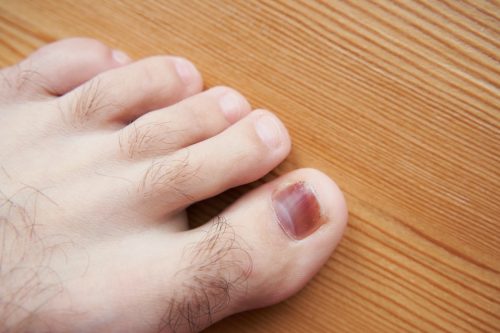
If your shoes are too small, you might feel pain around your toenails. You may even notice that there is blood underneath your nails, according to Sondema N. Tarr, DPM, a board-certified podiatrist working at Direct Podiatry Arizona.
“When anything is pressed or knocked against your nails long enough, the nail bed will start to bleed,” she explains. “Your nail will look red, brown, or purple. This is old blood that has dried.”
Tarr says that blood will stain your nail and make take upwards of a year to disappear fully as it grows out. But this could actually end up being the least of your worries.
“If there is too much blood under the nail, the nail can actually lift from the nail bed,” she warns. “Many times the nail has to be removed.”
For more health advice delivered straight to your inbox, sign up for our daily newsletter.
4
You’ve developed other physical injuries.
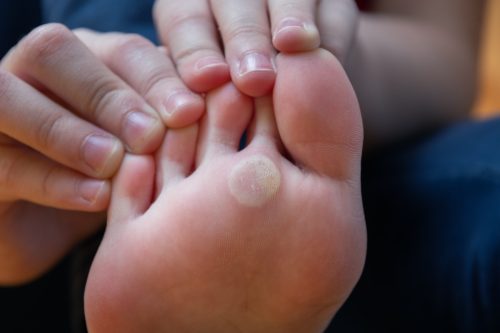
There are likely to be a number of noticeable problems on your feet from wearing the wrong shoe size. You could develop blisters, bunions, corns, and/or calluses, according to Alvarez. If blisters are constantly popping up on your toes, soles, or heels, that may mean your “shoes are too small,” he says.
Footwear that doesn’t fit properly can also cause and aggravate the pain of bunions, corns, or calluses.
“Bunions form when the joint at the base of your big toe deviates from its normal position and become painful and inflamed,” Alvarez shares. “Corns and calluses are areas of hardened skin that occur in response to friction or rubbing from ill-fitting shoes.”
5
You’re having trouble walking or running normally.
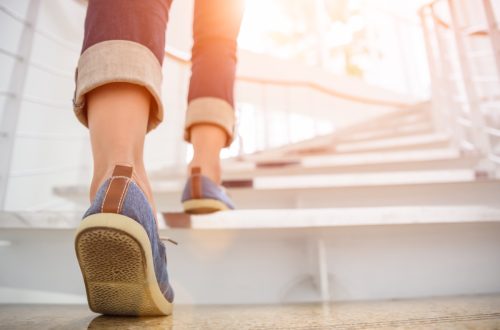
The wrong shoe size can make even normal daily movements uncomfortable. Arshiyal Fatima, a former nurse who works as a medical expert for the online shoe guide Legendary Diary, advises people to pay attention if they’re experiencing any challenges while walking or running.
“Shoes that are too tight or too loose can affect your gait, causing discomfort, pain, or instability while walking or running,” Fatima explains. “You may find yourself tripping, stumbling, or struggling to maintain proper balance, which can lead to discomfort and even injury.”